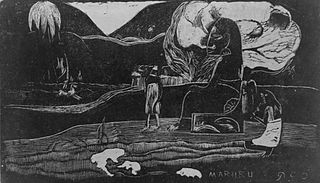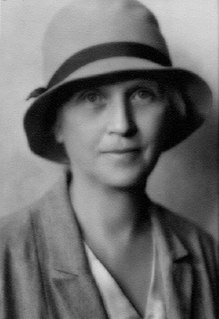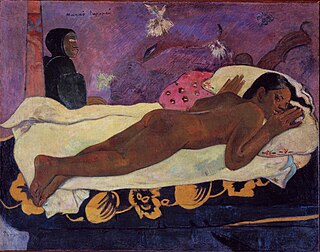Related Research Articles

The Polynesian narrative or Polynesian mythology encompasses the oral traditions of the people of Polynesia together with those of the scattered cultures known as the Polynesian outliers. Polynesians speak languages that descend from a language reconstructed as Proto-Polynesian - probably spoken in the Tonga - Samoa area around 1000 BC.
Māui (Maui) is the great culture hero and trickster in Polynesian mythology. Very rarely was Māui actually worshipped, being less of a deity and more of a folk hero. His origins vary from culture to culture, but many of his main exploits remain relatively similar.

Hina is the name assigned to a number of Polynesian deities. The name Hina usually relates to a powerful female force who has dominion over a specific entity. Some variations of the name Hina include Sina, Hanaiakamalama, and Ina. Even within a single culture, Hina could refer to multiple goddesses and the distinction between the different identities are not always clear. In Hawaiian mythology, the name is usually paired with words which explain or identify the goddess and her power such as Hina-puku-iʻa (Hina-gathering-seafood) the goddess of fishermen, and Hina-ʻopu-hala-koʻa who gave birth to all reef life.
In Hawaiian religion, Hiʻiaka is a daughter of Haumea and Kāne.

In Hawaiian mythology, Laka is the name of two different popular heroes from Polynesian mythology.. Lengthy legends of their exploits extend throughout the islands, and the kings of Tahiti and Hawaiʻi claimed them as their ancestors.
Kaha'i is a handsome Polynesian demigod whose exploits were popular in many Polynesian mythologies.

In Hawaiian mythology, Kamapuaʻa is a hog-man fertility superhuman associated with Lono, the god of agriculture. The son of Hina and Kahikiula, the chief of Oahu, Kamapuaʻa was particularly connected with the island of Maui.
In Hawaiian mythology, Nāmaka appears as a sea goddess in the Pele family. She is an older sister of Pele-honua-mea.
In the Polynesian narrative of the Tuamotus archipelago in the South Pacific, Puna is the king of Hiti-marama or of Vavaʻu, depending on the story.
In Hawaiian mythology, the Nawao are a legendary people, a wild, large-sized hunting people, descended from Lua-nu'u. Other sources suggest that the Nawao were present in Hawaii before the Menehune who are thought to have driven them out or destroyed them. However, folklorist Katherine Luomala believes that the legends of the Menehune and similar creatures are a post-European contact mythology.
In Hawaiian mythology, Laʻieikawai (Lāʻi.e.-i-ka-wai) and her twin sister Laʻielohelohe were princesses, and were born in Lāʻie, Oʻahu.
In Hawaiian mythology, Kapo is a goddess of fertility, sorcery and dark powers. Kapo is also known as Kapo-ʻula-kīnaʻu, where "the epithet ula-kinaʻu is used in allusion to the fact that her attire, red in color, is picked out with black spots. The name Kapo alone is the only by which she is usually known." "Kapo is said to have been born of Papa while she was living up Kalihi valley on Oahu with Wakea, her husband. Some say that she was born from the eyes of Papa. She is of high rank and able to assume many shapes at will." She is the mother of Laka, although some versions have them as the same goddess. She is the sister of Kāne Milohaʻi, Kāmohoaliʻi, Pele, Nāmaka and Hiʻiaka.
Rata, in Tahitian mythology, is said to have become king of Tahiti when his uncle, king Tumu-nui, and his father Vahieroa are swallowed by a great clam while they are on their way to Pitcairn. When he reaches adulthood, Rata plans to avenge his father. As in the Tuamotuan version, Rata identifies a tree to build his canoe, but it is protected by forest elves. After he captures them they build it for him in a single night. While en route for Pitcairn, Rata and his crew are sucked down into the same clam, but they use their spears to cut the monster open. They rescue the remains of Rata's father and uncle and bury them back in Tahiti. After recovering from their adventure, Rata sets out for further adventures. See also Aremata-Popoa and Aremata-Rorua.

In Hawaiian religion, Māui is a culture hero and ancient chief who appears in several different genealogies. In the Kumulipo, he is the son of ʻAkalana and his wife Hina-a-ke-ahi (Hina). This couple has four sons, Māui-mua, Māui-waena, Māui-kiʻikiʻi, and Māui-a-kalana. Māui-a-kalana's wife is named Hinakealohaila, and his son is named Nanamaoa. Māui is one of the Kupua. His name is the same as that of the Hawaiian island Maui, although native tradition holds that it is not named for him directly, but instead named after the son of Hawaii's discoverer.
In Tuamotu mythology, Vahi-vero is the son of the demigod Kui and a goblin woman named Rima-roa.
In the religion and mythology of the ancient Hawaiians, Papahānaumoku — often simply called Papa — is a goddess and the Earth Mother. She is mentioned in the chants as the consort of the sky god Wākea. Their daughter is beautiful goddess Hoʻohokukalani, the main character of one myth. Papa is still worshipped by some Hawaiians, especially by women, as a primordial force of creation who has the power to give life and to heal. The Northwestern Hawaiian Islands Marine National Monument was renamed in 2007 to the Papahānaumokuākea Marine National Monument, in honour of Papa.

Martha Warren Beckwith was an American folklorist and ethnographer, appointed to the first chair in Folklore established in the U.S.

ʻOro is a god in Tahiti and Society Islands mythology. The veneration of ʻOro, although practiced in varying intensity among the islands, was a major religion of the Society Islands in the 17th and 18th centuries, especially Tahiti, Tahaa, Moorea, and Raiatea. On Tahiti, ʻOro was the main deity and the god of war. The secret society of Arioi was closely linked because of its rites. On the Marquesas Islands, ʻOro bore the name Mahui.

In Hawaiian religion, Kū is one of the four great gods. The other three are Kanaloa, Kāne, and Lono. Some feathered god images or akua hulu manu are considered to represent Kū. Kū is worshiped under many names, including Kū-ka-ili-moku, the "Snatcher of Land". Rituals for Kūkaʻilimoku included human sacrifice, which was not part of the worship of other gods.

There was widespread belief in ghosts in Polynesian culture, some of which persists today. After death, a person's ghost would normally travel to the sky world or the underworld, but some could stay on earth. In many Polynesian legends, ghosts were often involved in the affairs of the living. Ghosts might also cause sickness or even invade the body of ordinary people, to be driven out through strong medicines.
References
- ↑ "A history of fishing practices and marine fisheries of the Hawaiian Islands". Kumu Pono Associates. pp. 42-44
- ↑ "The Sacred Spine". Maui No Ka Oi Magazine. Retrieved June 28th, 2019.
- R.D. Craig, Dictionary of Polynesian Mythology (Greenwood Press: New York, 1989).
- M. Beckwith, Hawaiian Mythology (Yale University Press: New Haven, 1940).